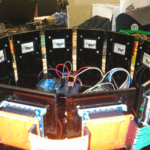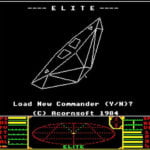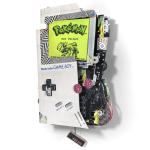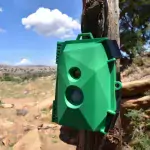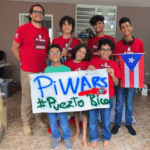Become a new hope for a galaxy far, far away by recreating an iconic scene from Star Wars. In the brand new issue of The MagPi, out now, Rob Zwetsloot checks out the information stored in this R2-unit.

Help me, Obi-Wan Kenobi. You’re my only hope” pleaded Princess Leia in a hologram message to the old Jedi Master, an iconic Star Wars line from one of the most important films of all time, called back to in many films, books, and games in the franchise. This scene has been faithfully recreated by Wayne Chan, previously featured in The MagPi with his entry/exit notifier in issue 117 (magpi.cc/117), using some very neat effects.

“During the holiday season last year, I bought a metal model kit of R2-D2 as a gift for a friend who was a Star Wars fan,” Wayne tells us. “However, after thinking about it, I realized that she wasn’t very handy and would likely have trouble assembling the kit, so I decided to assemble it myself and then give it to her. It took more time than I had anticipated, though, and I ended up having to give her something else in time for Christmas.” This delay gave Wayne a bit more time to think up a better gift using R2-D2.

“My intention was then to give the model to her on some other occasion,” Wayne continues. “However, once I had R2-D2 built, it seemed like the model by itself wasn’t enough, so I decided to create a diorama around it. After brainstorming a few ideas, I settled on the iconic scene from Star Wars: Episode IV: A New Hope where Artoo projects a hologram of Princess Leia. I knew I could probably use the old Pepper’s Ghost illusion to emulate the holographic effect.”

We’ve talked about Pepper’s Ghost illusions in the past – it’s an old, yet very effective, practical optical illusion where a scene out of view of the observer is reflected onto a sheet of clear glass (or similar) that the audience can see. It’s used in theme parks, concerts, teleprompters, and much more.
Do or do not
Wayne decided to go ahead using a Raspberry Pi 3A+ he had lying around and connecting a 3.5” LCD screen – although he had to fight a bit of GPIO space for everything else, it all came together nicely.

“The box is made from black foamcore board,” Wayne explains. “A sheet of clear acrylic is set at a 45 degree angle in the box… A video of Princess Leia’s holographic message is played on the screen and reflected by the acrylic sheet to look like she is standing on the table. Inside the R2-D2 model, there is a white LED that’s located behind the holoprojector port in R2-D2’s head. This simulates the light coming from the projector when R2 is displaying the hologram. Another LED was placed near the front of the diorama to provide some illumination to the scene. Both LEDs are powered by USB.”

With most of the visual part sorted, Wayne then looked at speakers so the message could actually be played.
“To hear Leia’s message, I found a speaker at a thrift shop that vaguely resembled the round table in Obi-Wan’s house,” Wayne says. “It was originally a Bluetooth speaker, but I didn’t want to worry about losing the pairing or having to recharge the lithium-ion battery all the time, so I gutted the internals and replaced them with a mini audio amplifier board, which I wired to the raw speaker. The audio input came from the 3.5 mm jack on Raspberry Pi, and power was supplied through USB instead of a battery.”
Token of goodwill
Although not quite finished, Wayne was able to gift it… briefly.

“I showed it to my friend on Star Wars Day (May 4),” Wayne tells us. “She loved it and said it was the best gift she has ever received. She even hugged it! I refused to let her have it, though, because I wasn’t quite finished with it yet. When (if?) my friend finally receives the diorama, I am told that it will have pride of place on the main shelf of her new entertainment unit. She’s getting a little impatient, since I keep finding things to add to it!”

We wish Wayne good luck, and may the Force be with him.
The MagPi #132 out NOW!
You can grab the brand-new issue right now from Tesco, Sainsbury’s, Asda, WHSmith, and other newsagents, including the Raspberry Pi Store in Cambridge. It’s also available at our online store which ships around the world. You can also get it via our app on Android or iOS.

You can also subscribe to the print version of The MagPi. Not only do we deliver it globally, but people who sign up to the six- or twelve-month print subscription get a FREE Raspberry Pi Pico W!
The free PDF will be available in three weeks time. Visit the issue page for more details.


